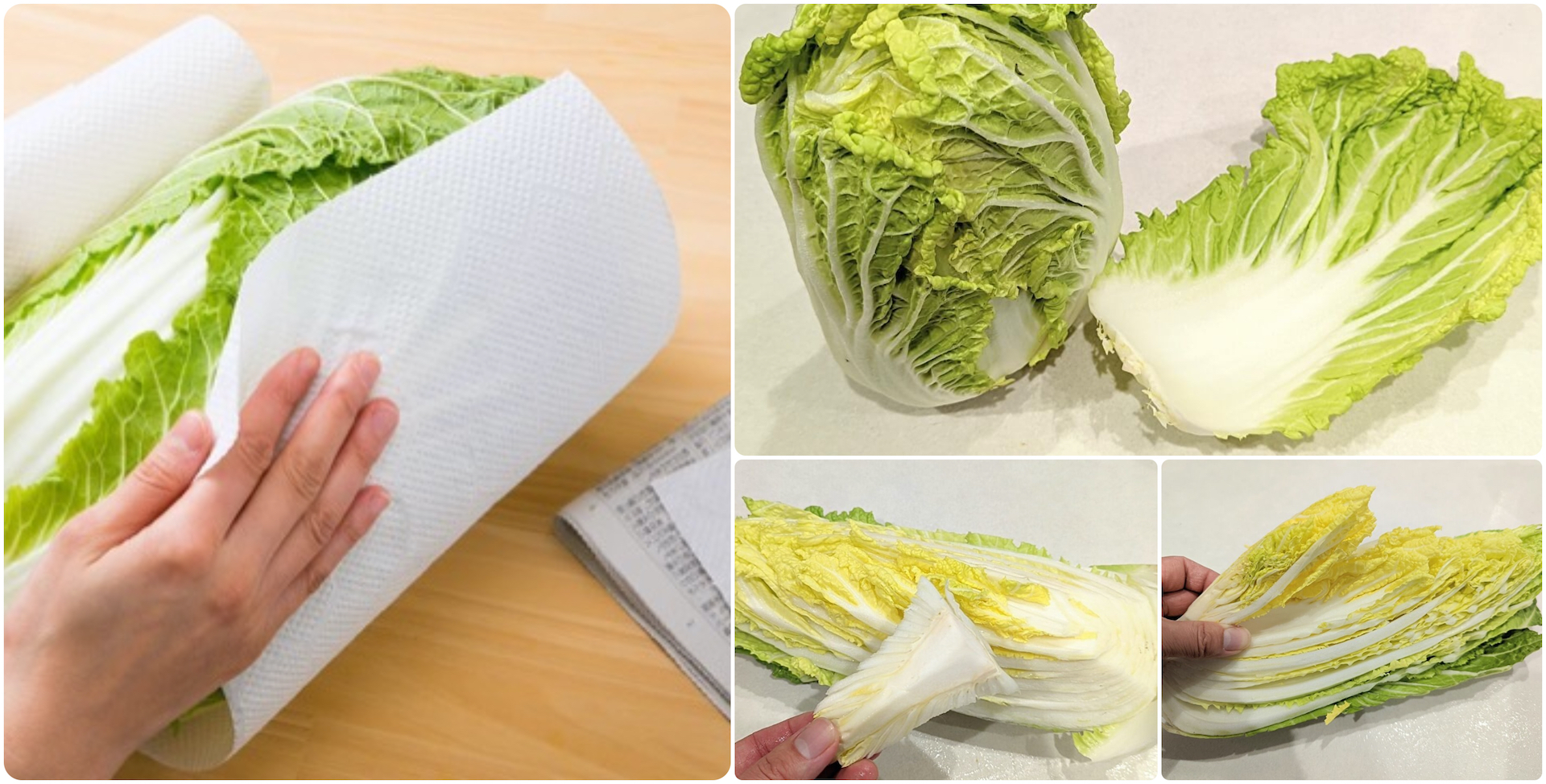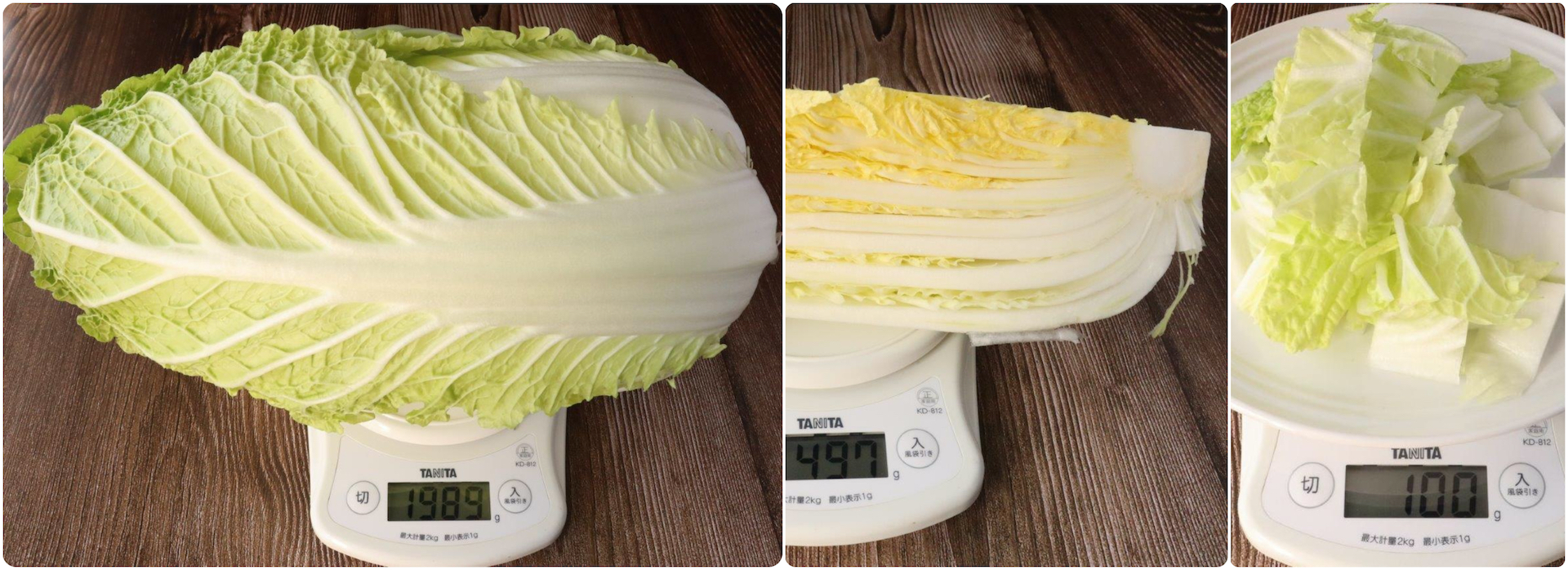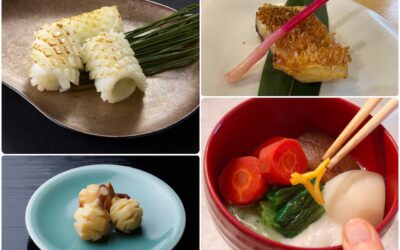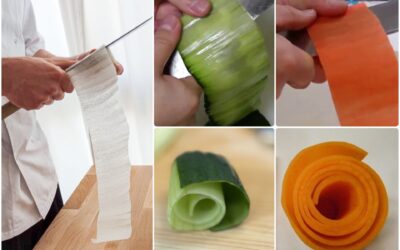
Using HAKUSAI fully
A favorite wintertime vegetable in Japan, hakusai cabbages are increasingly available in Asian groceries throughout the world. A whole head averages 2 kilo (about 4 and 1/2 pounds). I encourage you to buy one (or at least a half or quarter-head wedge) and use it fully. Over the course of a week or 10 days try your hand at making several different dishes from it.
Download a recipe for: HAKUSAI no SENMAI NABÉ (Many-Layered Pork and Napa Cabbage Hot Pot 白菜の千枚鍋) to get you started. The most suitable leaves for making this dish are from the center of the head. To get to these tender leaves, peel away some of the outer-most layers — they are likely to be bruised, but save them to use as a “lid” for pickles.
Next, download a recipe for: HAKUSAI no SOKUSEKI-ZUKÉ (Quick-Pickled Hakusai Cabbage 白菜の即席漬). Here is your chance to use any trim from constructing your layered pork and hakusai segments for your hot pot. Quick Pickles are also a great way to use the tougher core pieces of hakusai.
Other suggestions include stir-frys, soups and gyōza dumplings (use the recipe on pg 260 of WASHOKU to guide you).
Hakusai also works well with noodle dishes. Try it as a topping for nyūmen and for sara udon (Flat Plate Udon Noodles pg 63 KANSHA).
See page 200 of An American Taste of Japan (Morrow, 1985) for instruction on making Shabu Shabu (Bubbling Beef-in-a-Pot).
A recipe for another quick-fix pickle combining hakusai with cucumbers and fiery yuzu koshō (Crisp and Fiery Chinese Cabbage and Cucumbers) can be found on pg 195 KANSHA.

Download a Guide to Buying, Storing, and Using Hakusai Fully
Visit the Kitchen Culture page for more about hakusai. And read about hakusai in my January 2023 NEWSLETTER




